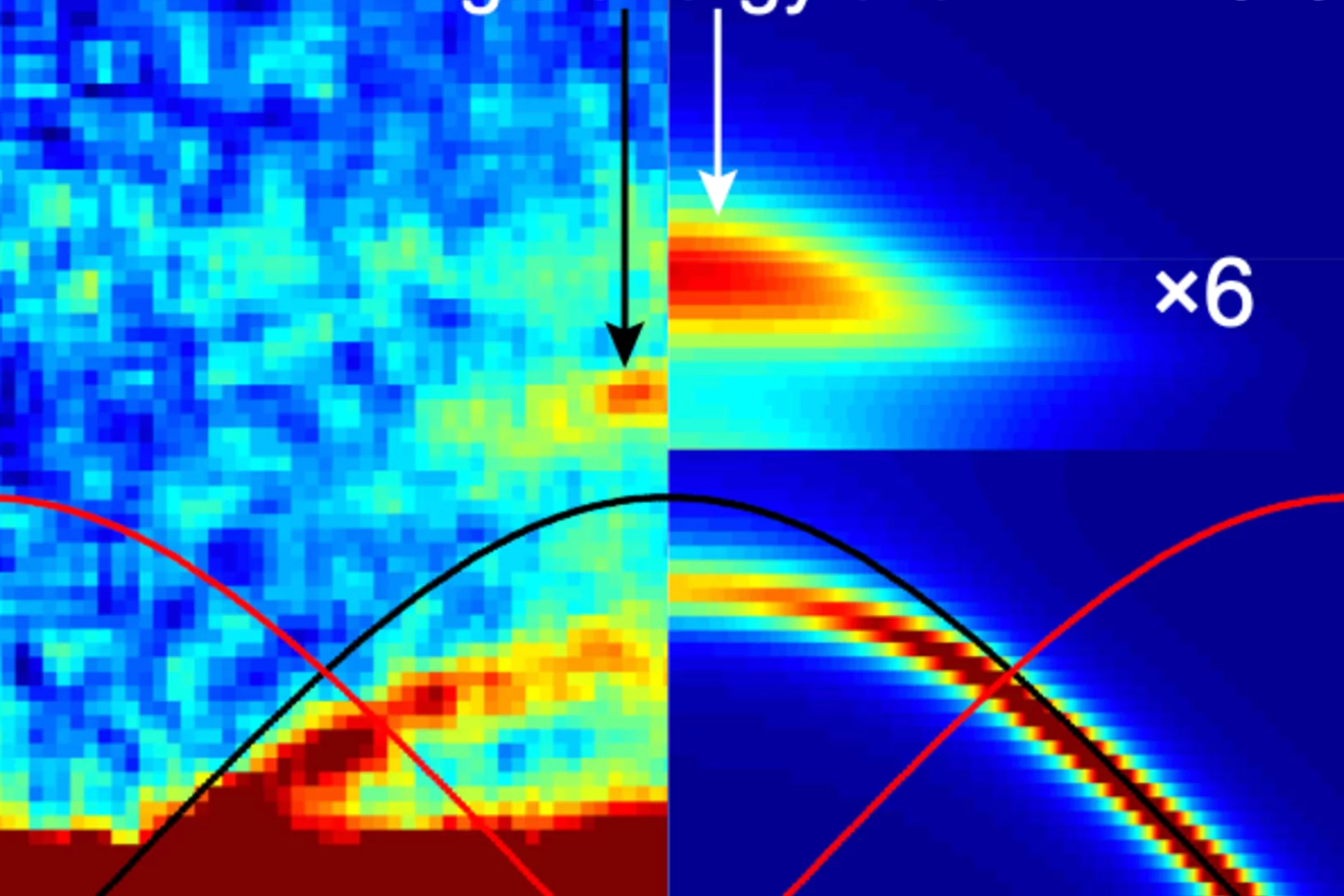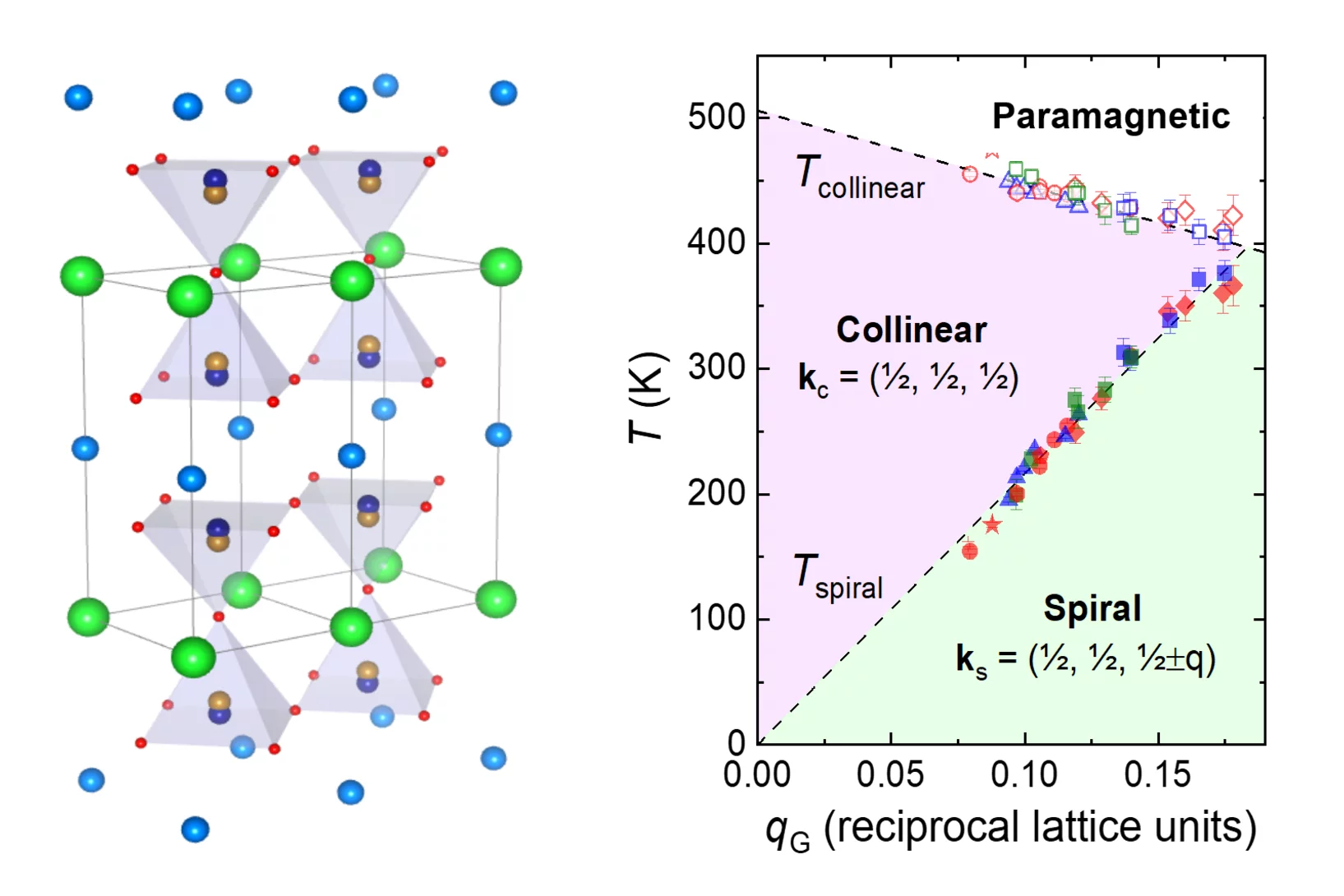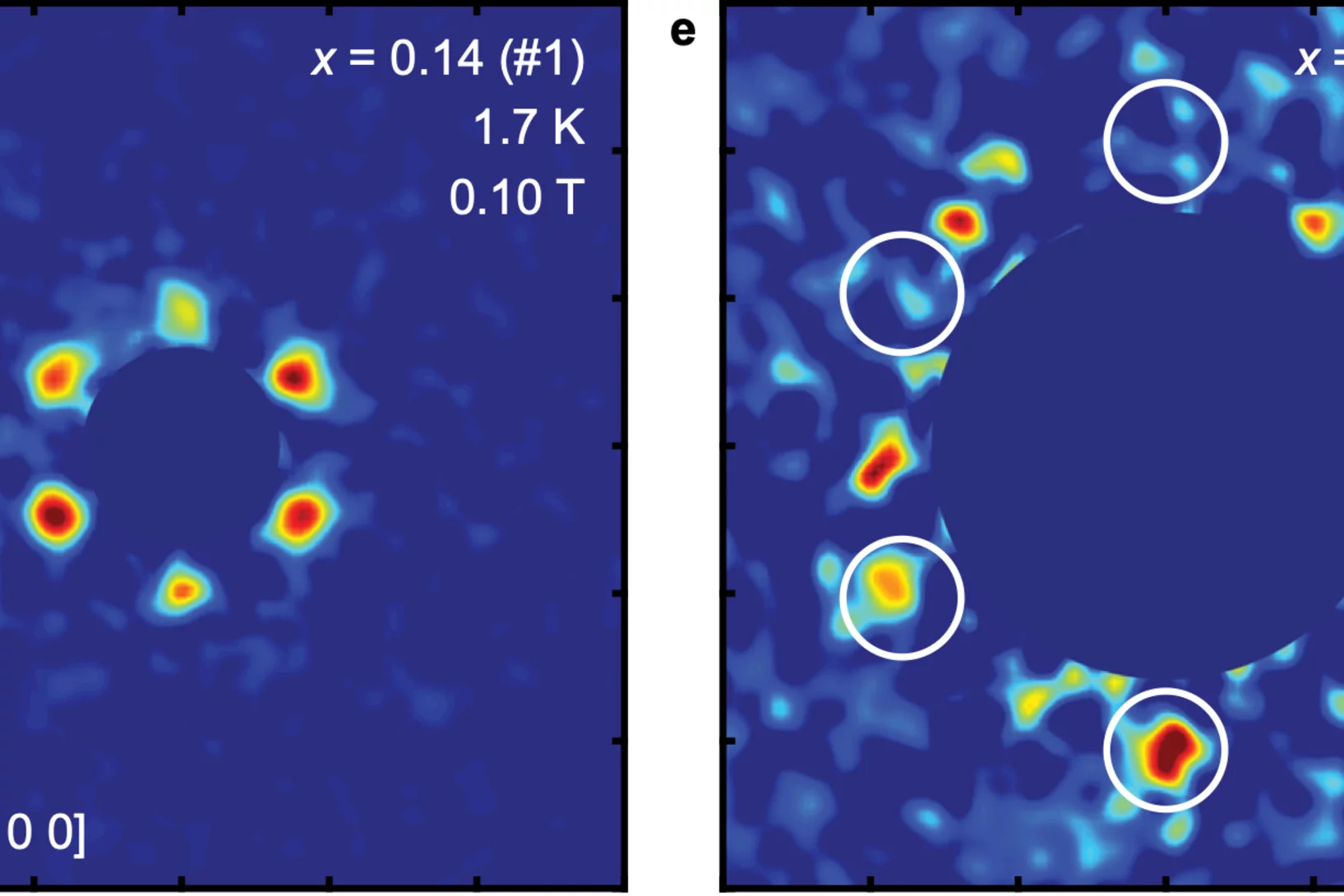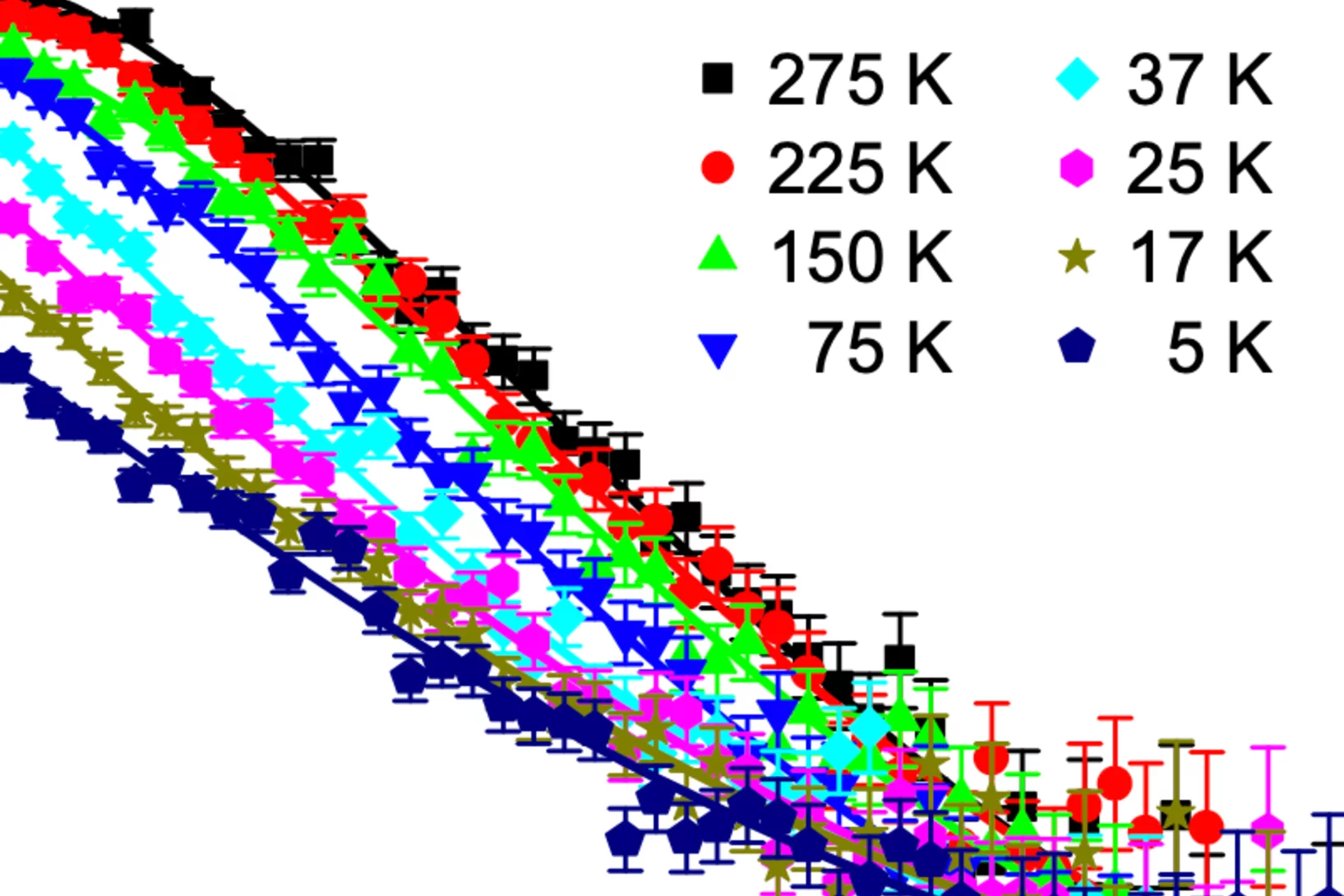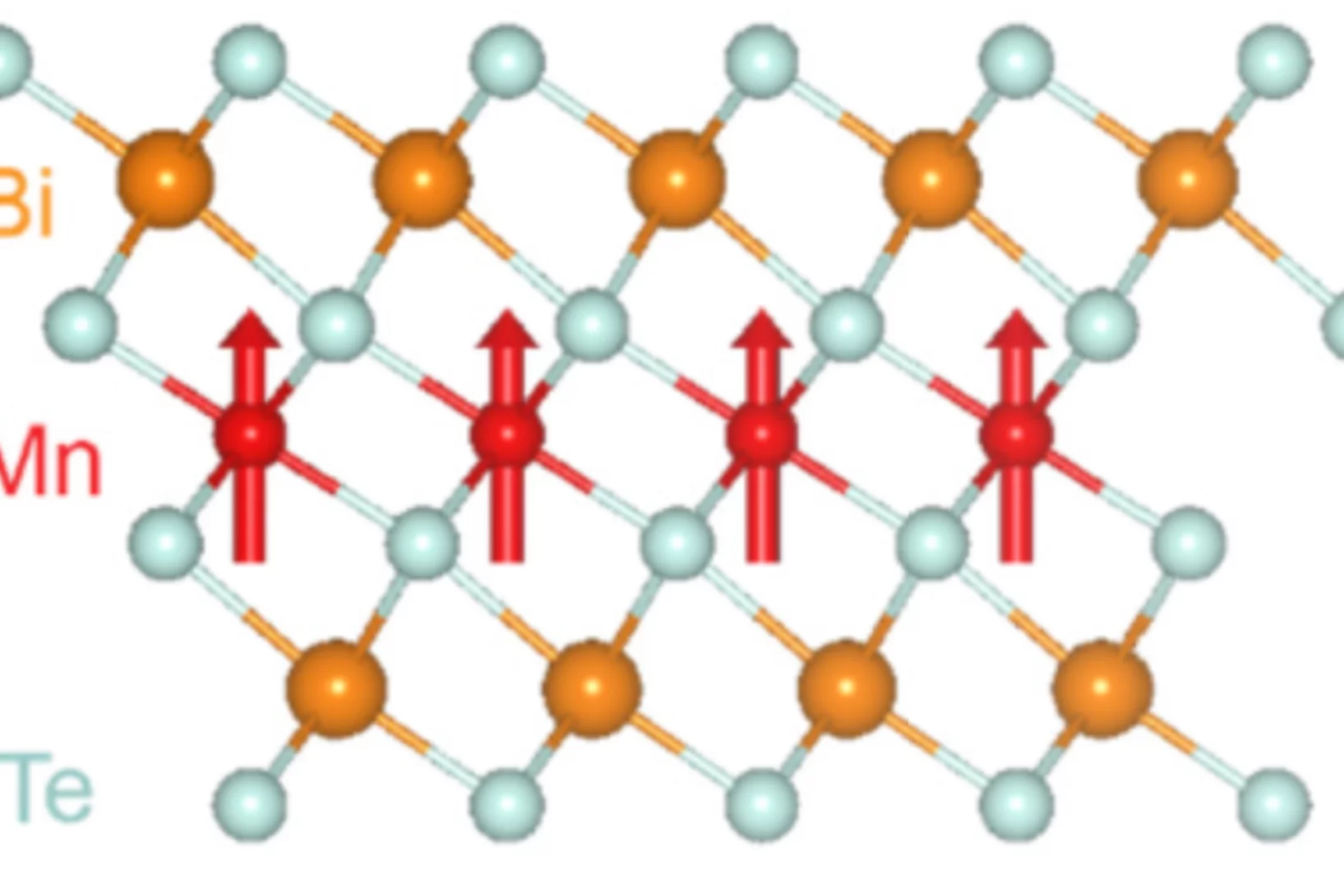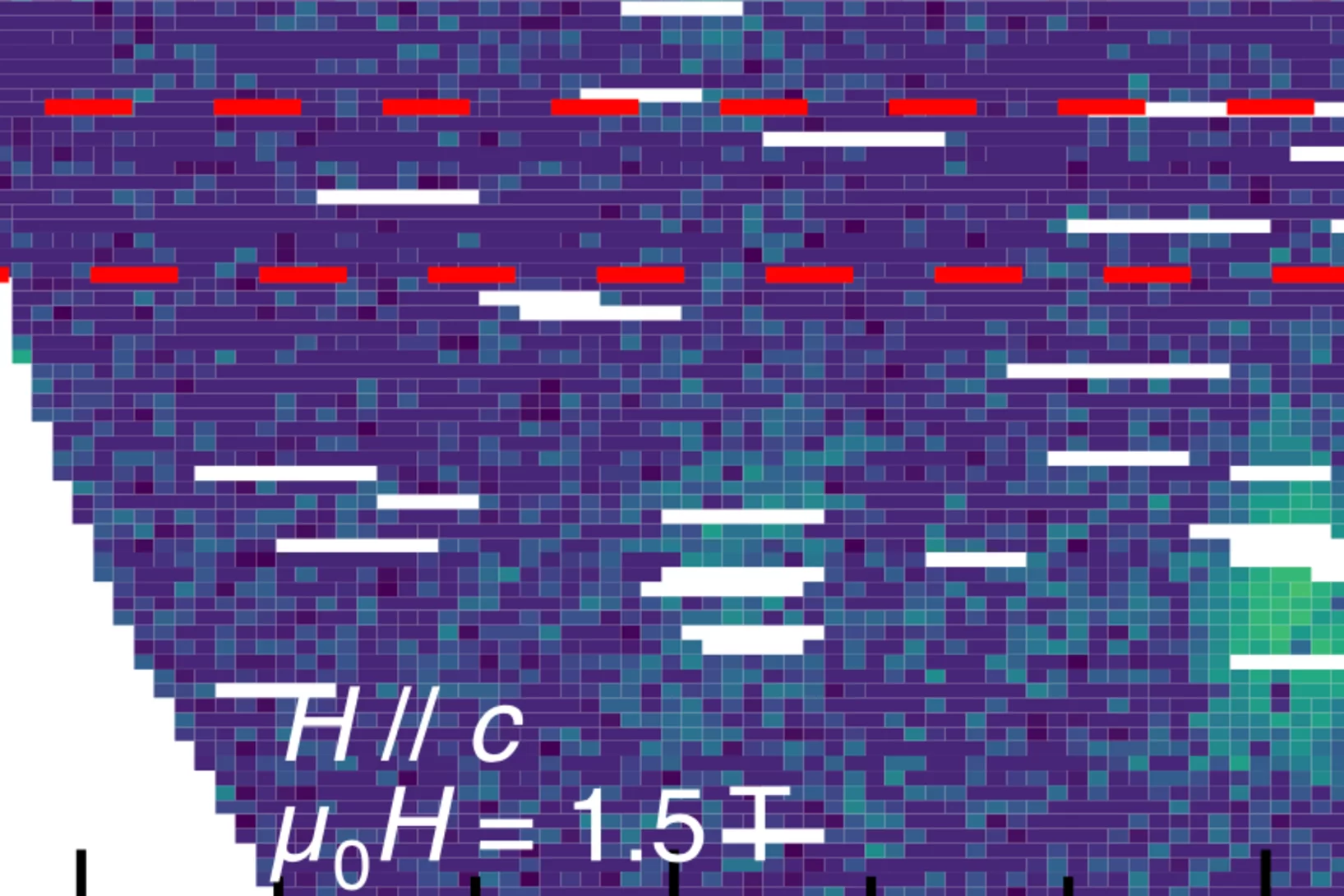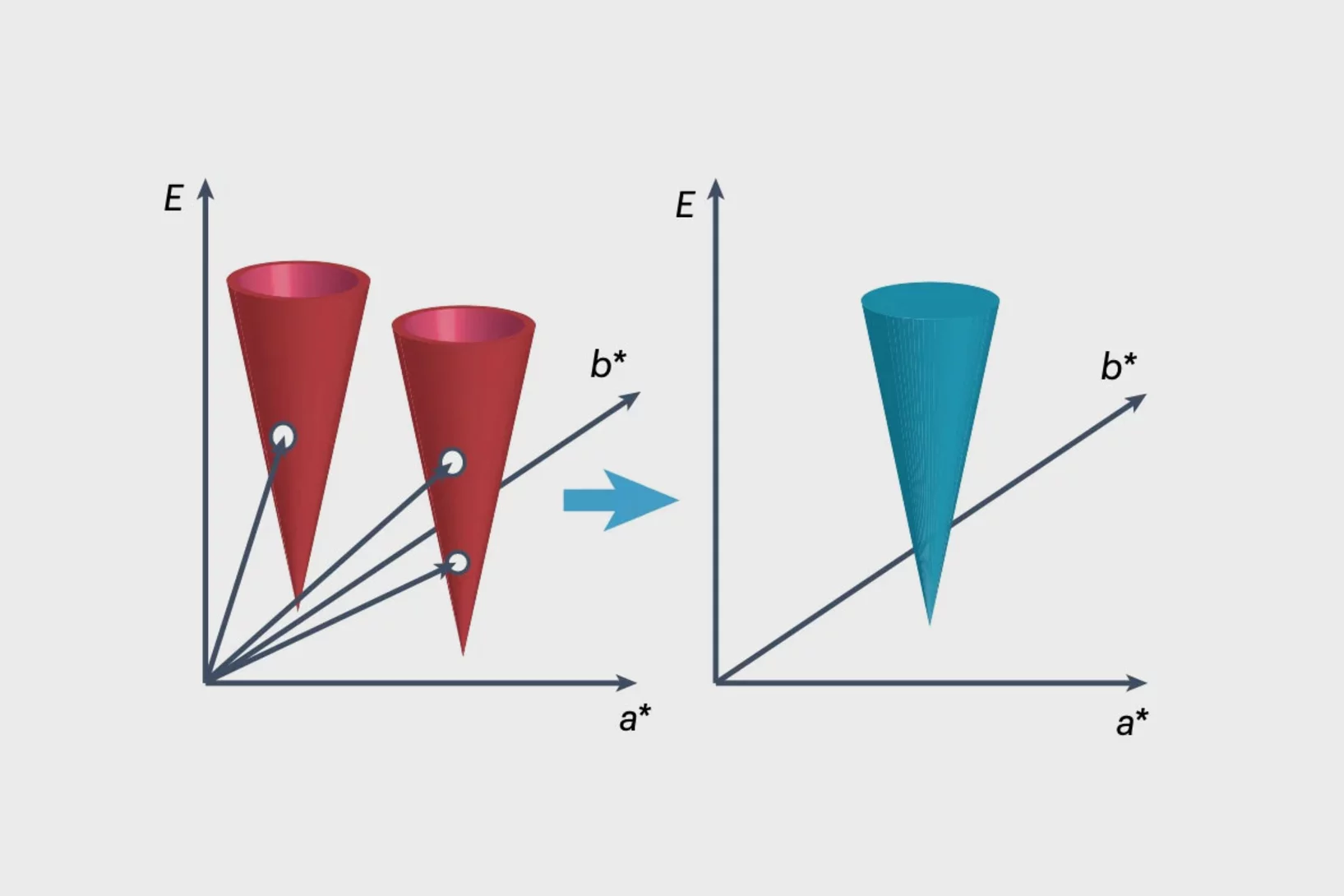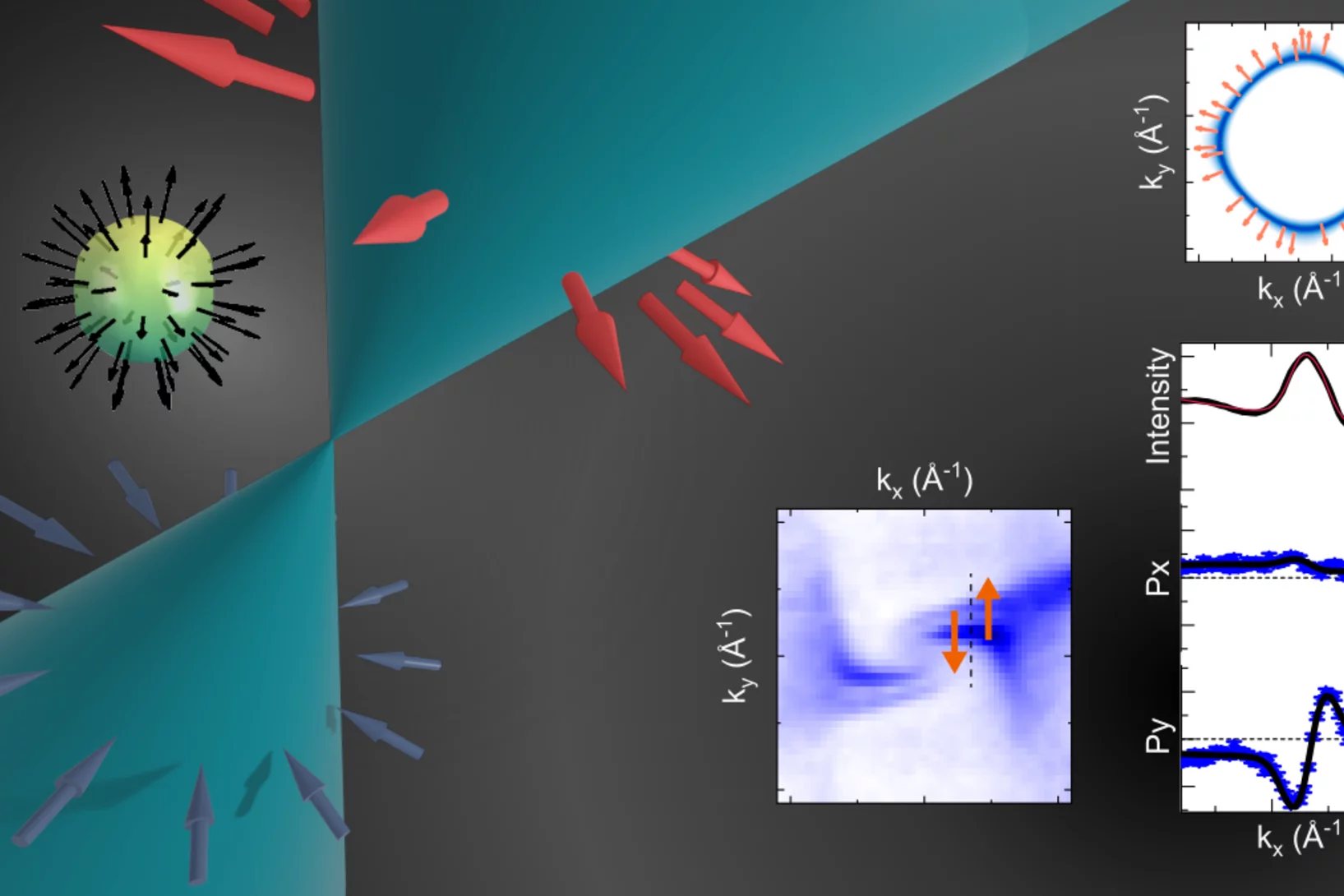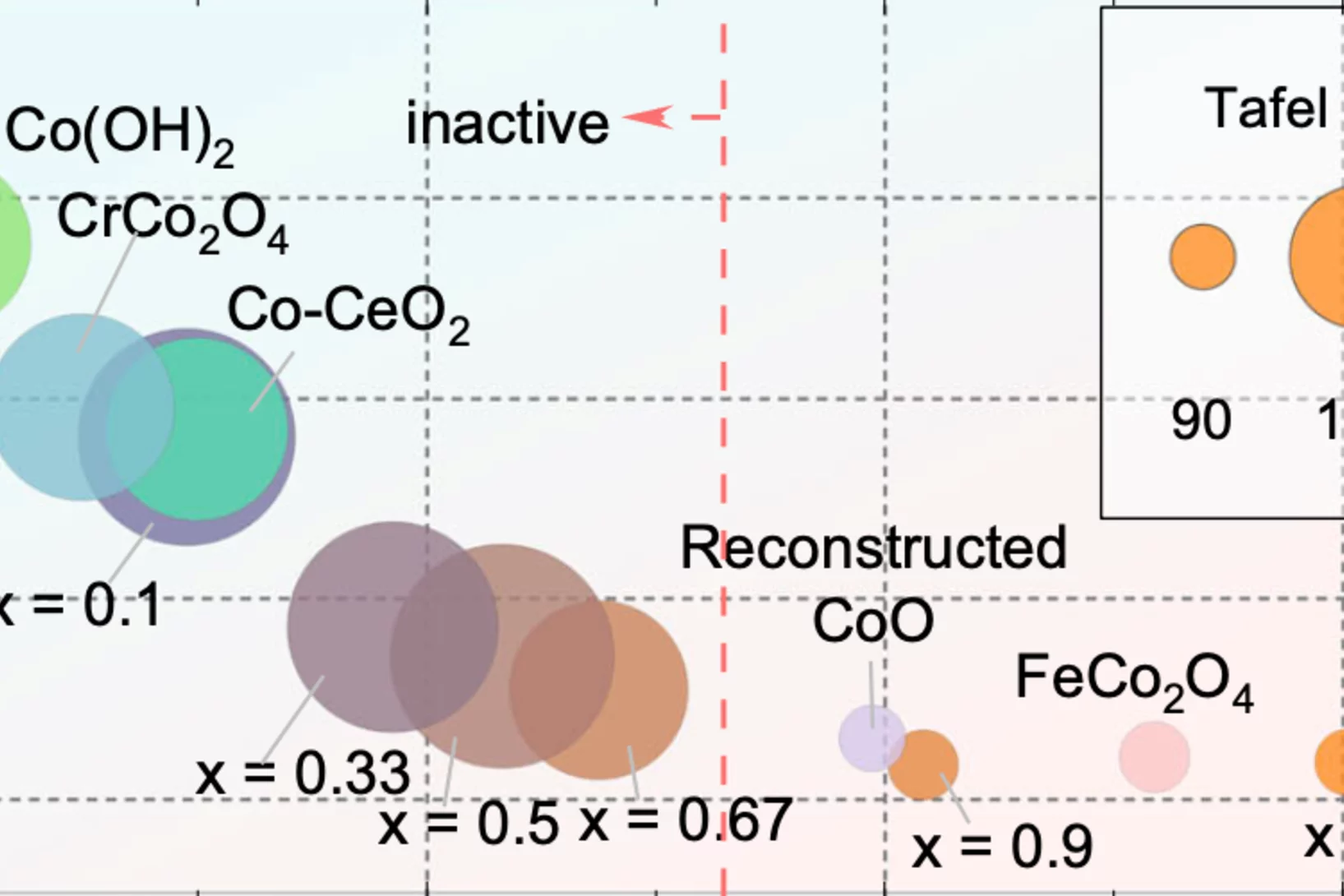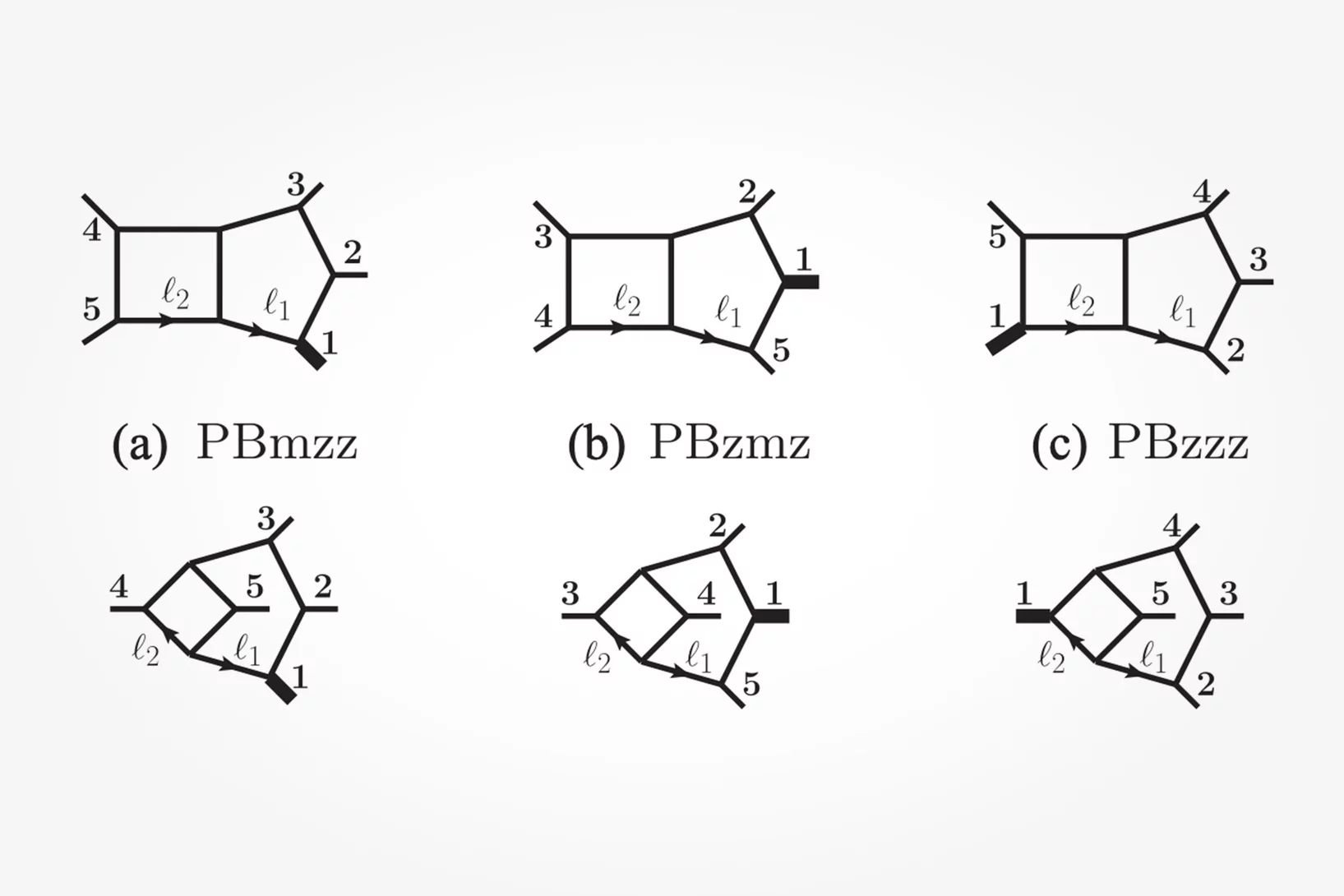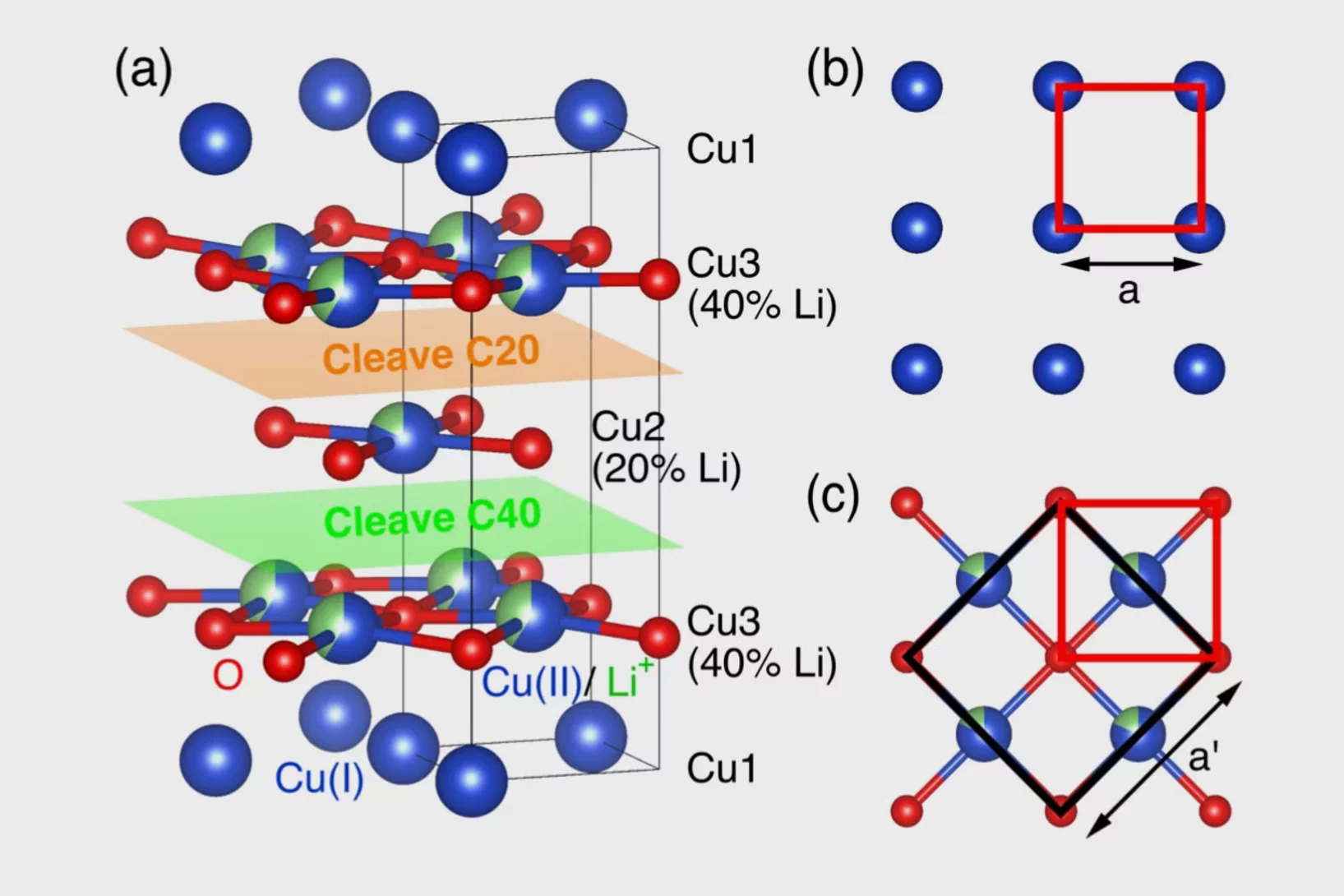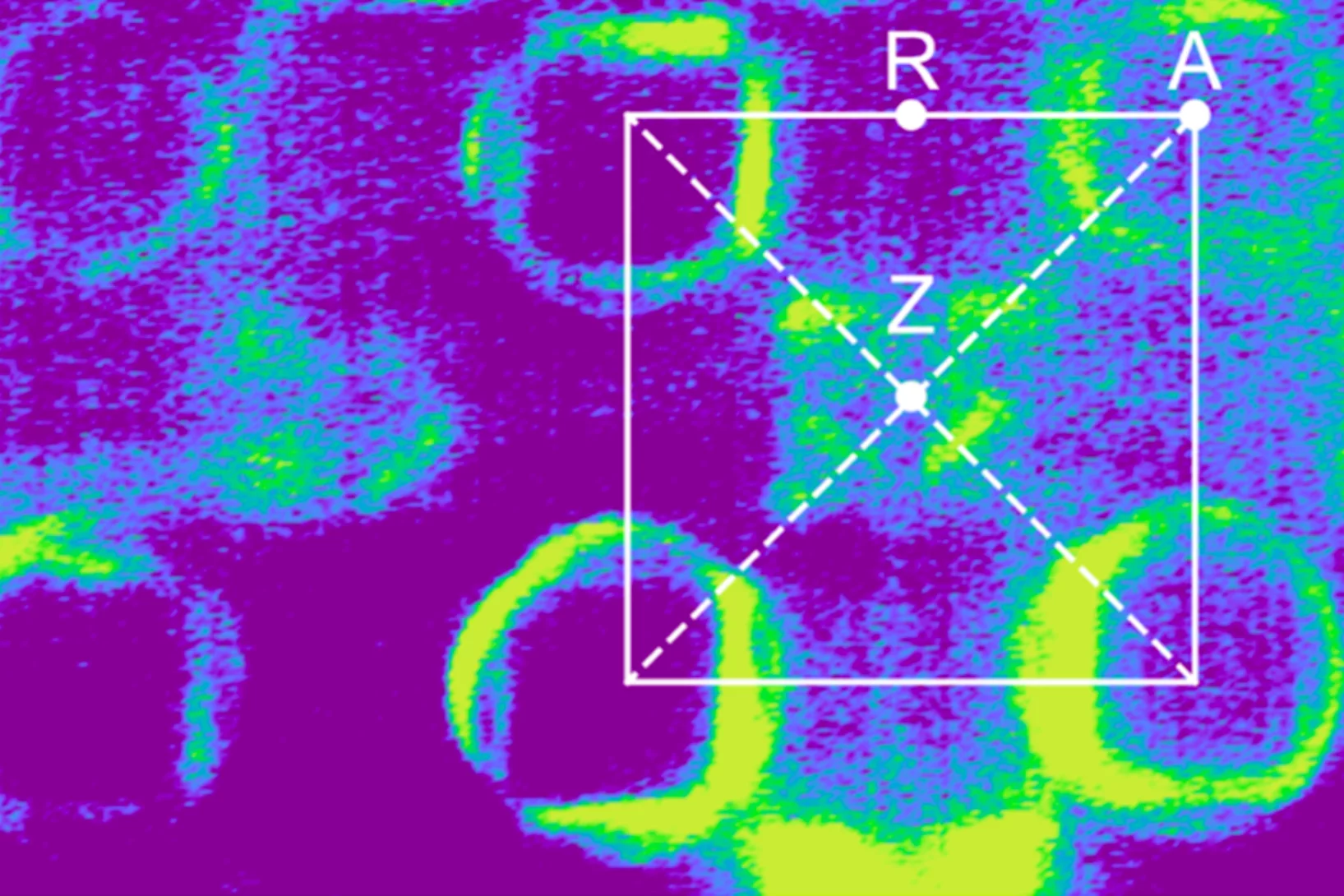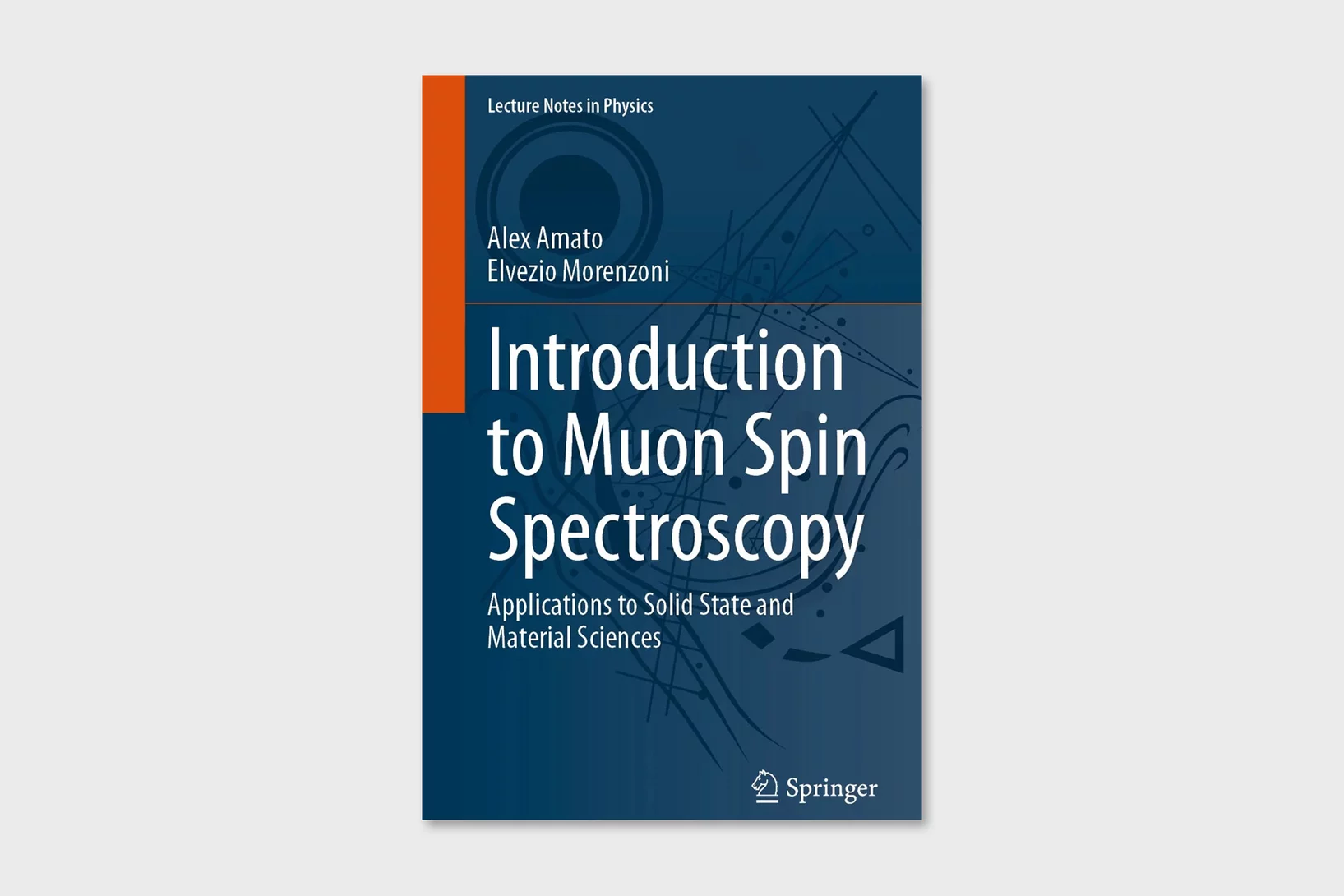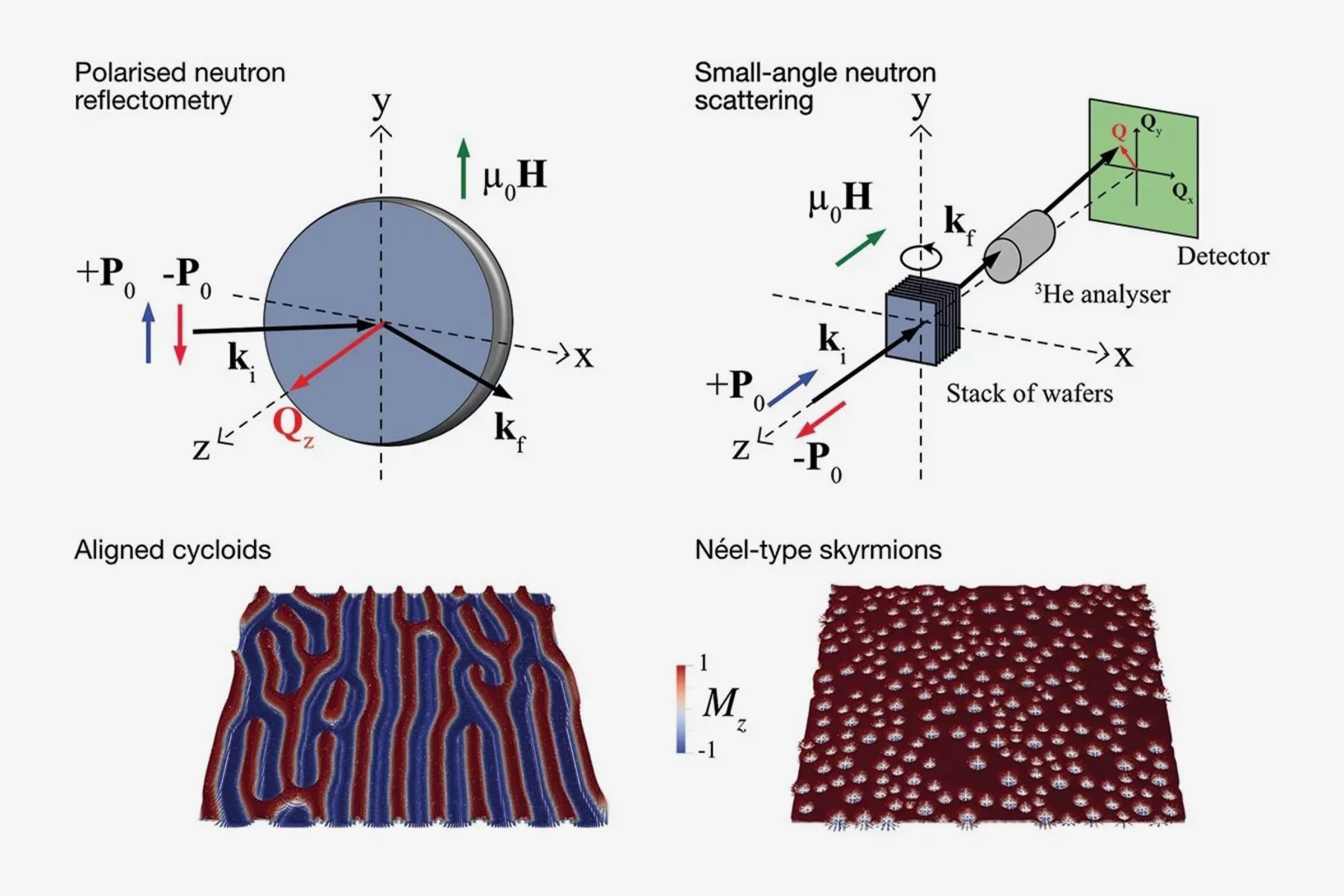Continuum Excitations in a Spin Supersolid on a Triangular Lattice
Magnetic, thermodynamic, neutron diffraction and inelastic neutron scattering are used to study spin correlations in the easy-axis XXZ triangular lattice magnet K2Co(SeO3)2. Despite the presence of quasi-2D “supersolid” magnetic order, the low-energy excitation spectrum contains no sharp modes and is instead a broad and structured multiparticle continuum. Applying a weak magnetic field ...
Reentrant multiple-q magnetic order and a “spin meta-cholesteric” phase in Sr3Fe2O7
Topologically nontrivial magnetic structures such as skyrmion lattices are well known in materials lacking lattice inversion symmetry, where antisymmetric exchange interactions are allowed. Only recently, topological multi-q magnetic textures that spontaneously break the chiral symmetry, for example, three-dimensional hedgehog lattices, were discovered in centrosymmetric compounds, where they are instead driven by frustrated interactions. Here we show that ...
Ferromagnetic quantum critical point protected by nonsymmorphic symmetry in a Kondo metal
Quantum critical points (QCPs), zero-temperature phase transitions, are win- dows to fundamental quantum-mechanical phenomena associated with universal behaviour. Magnetic QCPs have been extensively investigated in the vicinity of antiferromagnetic order. However, QCPs are rare in metallic ferromagnets due to the coupling of the order parameter to electronic soft modes. Recently, antisymmetric spin-orbit coupling in noncentrosymmetric systems was suggested to protect ferromagnetic QCPs. Nonetheless, multiple centrosymmetric materials ...
Quantum Spin Dynamics Due to Strong Kitaev Interactions in the Triangular-Lattice Antiferromagnet CsCeSe2
The extraordinary properties of the Kitaev model have motivated an intense search for new physics in materials that combine geometrical and bond frustration. In this Letter, we employ inelastic neutron scattering, spin wave theory, and exact diagonalization to study the spin dynamics in the perfect triangular-lattice antiferromagnet (TLAF) CsCeSe2. This material orders into a stripe phase, which is demonstrated to arise as a consequence of the off-diagonal bond-dependent terms in the spin Hamiltonian ...
Evidence for time-reversal symmetry-breaking kagome superconductivity
Superconductivity and magnetism are often antagonistic in quantum matter, although their intertwining has long been considered in frustrated-lattice systems. Here we utilize scanning tunnelling microscopy and muon spin resonance to demonstrate time-reversal symmetry-breaking superconductivity in kagome metal Cs(V, Ta)3Sb5, where the Cooper pairing exhibits magnetism and is modulated by it. In the magnetic channel, we observe spontaneous internal magnetism ...
Chiral kagome superconductivity modulations with residual Fermi arcs
Superconductivity involving finite-momentum pairing can lead to spatial-gap and pair-density modulations, as well as Bogoliubov Fermi states within the superconducting gap. However, the experimental realization of their intertwined relations has been challenging. Here we detect chiral kagome superconductivity modulations with residual Fermi arcs in KV3Sb5 and CsV3Sb5 using normal and Josephson scanning tunnelling microscopy down to 30 millikelvin with a resolved electronic energy difference at the microelectronvolt level. We observe a U-shaped ...
Room temperature magnetoelectric magnetic spirals by design
Frustrated magnets with ordered magnetic spiral phases that spontaneously break inversion symmetry have received significant attention from both fundamental and applied sciences communities due to the experimental demonstration that some of these materials can couple to the lattice and induce electric polarization. In these materials, the common origin of the electric and magnetic orders guarantees substantial coupling between them, which is highly desirable for applications ...
Magnetostructural Coupling at the Néel Point in YNiO3 Single Crystals
The recent discovery of superconductivity in infinite layer thin films and bulk Ruddlesden–Popper nickelates has stimulated the investigation of other predicted properties of these materials. Among them, the existence of magnetism-driven ferroelectricity in the parent compounds RNiO3 (R = 4f lanthanide and Y) at the onset of the Néel order, TN, has remained particularly elusive. Using diffraction techniques, we reveal here the existence of magnetostriction at TN in bulk YNiO3 single crystals. Interestingly, the associated lattice anomalies ...
Conventional superconductivity in the doped kagome superconductor Cs(V0.86Ta0.14)3Sb5 from vortex lattice studies
A hallmark of unconventional superconductors is a complex electronic phase diagram where intertwined orders of charge-spin-lattice degrees of freedom compete and coexist. While the kagome metals such as CsV3Sb5 also exhibit complex behavior, involving coexisting charge density wave order and superconductivity, much is unclear about the microscopic origin of the superconducting pairing. We study the vortex lattice in the superconducting state of Cs(V0.86Ta0.14)3Sb5, where the Ta-doping suppresses charge order and enhances superconductivity. Using small-angle neutron scattering ...
Observation of Mermin-Wagner behavior in LaFeO3/SrTiO3 superlattices
Two-dimensional magnetic materials can exhibit new magnetic properties due to the enhanced spin fluctuations that arise in reduced dimension. However, the suppression of the long-range magnetic order in two dimensions due to long-wavelength spin fluctuations, as suggested by the Mermin-Wagner theorem, has been questioned for finite-size laboratory samples. Here we study ...
Coexistence of Superconductivity and Antiferromagnetism in Topological Magnet MnBi2Te4 Films
The interface of two materials can harbor unexpected emergent phenomena. One example is interface-induced superconductivity. In this work, we employ molecular beam epitaxy to grow a series of heterostructures formed by stacking together two nonsuperconducting antiferromagnetic materials, an intrinsic antiferromagnetic topological insulator MnBi2Te4 and an antiferromagnetic iron chalcogenide FeTe.
Non-coplanar helimagnetism in the layered van-der-Waals metal DyTe3
Van-der-Waals magnetic materials can be exfoliated to realize ultrathin sheets or interfaces with highly controllable optical or spintronics responses. In majority, these are collinear ferro-, ferri-, or antiferromagnets, with a particular scarcity of lattice-incommensurate helimagnets of defined left- or right-handed rotation sense, or helicity. Here, we report polarized neutron scattering experiments on DyTe3, whose layered structure has highly metallic tellurium layers separated by double-slabs of dysprosium square nets...
Spectral evidence for Dirac spinons in a kagome lattice antiferromagnet
Emergent quasiparticles with a Dirac dispersion in condensed matter systems can be described by the Dirac equation for relativistic electrons, in analogy with Dirac particles in high-energy physics. For example, electrons with a Dirac dispersion have been intensively studied in electronic systems such as graphene and topological insulators. However, charge is not a prerequisite for Dirac fermions, and the emergence of Dirac fermions without a charge degree of freedom has been theoretically predicted to be realized in Dirac quantum spin liquids. These quasiparticles ...
Weyl spin-momentum locking in a chiral topological semimetal
Spin–orbit coupling in noncentrosymmetric crystals leads to spin–momentum locking – a directional relationship between an electron’s spin angular momentum and its linear momentum. Isotropic orthogonal Rashba spin–momentum locking has been studied for decades, while its counterpart, isotropic parallel Weyl spin–momentum locking has remained elusive in experiments. Theory predicts ...
Surface oxidation/spin state determines oxygen evolution reaction activity of cobalt-based catalysts in acidic environment
Co-based catalysts are promising candidates to replace Ir/Ru-based oxides for oxygen evolution reaction (OER) catalysis in an acidic environment. However, both the reaction mechanism and the active species under acidic conditions remain unclear. In this study, by combining surface-sensitive soft X-ray absorption spectroscopy characterization with electrochemical analysis, we discover that the acidic OER activity of Co-based catalysts are determined by their surface oxidation/spin state.
All Two-Loop Feynman Integrals for Five-Point One-Mass Scattering
We compute the complete set of two-loop master integrals for the scattering of four massless particles and a massive one. Our results are ready for phenomenological applications, removing a major obstacle to the computation of complete next-to-next-to-leading order QCD corrections to processes such as the production of a H/Z/W boson in association with two jets at the LHC. Furthermore ...
Electron Glass Phase with Resilient Zhang-Rice Singlets in LiCu3O3
LiCu3O3 is an antiferromagnetic mixed valence cuprate where trilayers of edge-sharing Cu(II)O (3d9) are sandwiched in between planes of Cu(I) (3d10) ions, with Li stochastically substituting Cu(II). Angle-resolved photoemission spectroscopy (ARPES) and density functional theory reveal two insulating electronic subsystems that are segregated in spite of sharing common oxygen atoms: a Cu dz2/O pz derived valence band (VB) dispersing on the Cu(I) plane, and a Cu 3dx2−y2/O 2px,y derived Zhang-Rice singlet (ZRS) band dispersing on the Cu(II)O planes.
Flat-band hybridization between f and d states near the Fermi energy of SmCoIn5
We present high-quality angle-resolved photoemission (ARPES) and density functional theory calculations (DFT+U) of SmCoIn5. We find broad agreement with previously published studies of LaCoIn5 and CeCoIn5, confirming that the Sm 4f electrons are mostly localized. Nevertheless, our model is consistent with an additional delocalized Sm component, stemming from hybridization between the 4f electrons and the metallic bands at “hot spot” positions in the Brillouin zone.
Introduction to Muon Spin Spectroscopy
Alex Amato and Elvezio Morenzoni have published a new textbook entitled 'Introduction to Muon Spin Spectroscopy: Applications to Solid State and Material Sciences'. The book is ideal for a first course in muon spin spectroscopy (µSR), comes enriched with exercises and solutions to master the subject and includes practical examples to quantify key experimental parameters.
Observation by SANS and PNR of pure Néel-type domain wall profiles and skyrmion suppression below room temperature in magnetic [Pt/CoFeB/Ru]10 multilayers
The study presents a unique investigation of [Pt/CoFeB/Ru]10 multilayers, revealing suppressed skyrmion phases, intricate magnetic domain structures, and Néel-type domain walls, providing crucial insights for spintronic applications.




